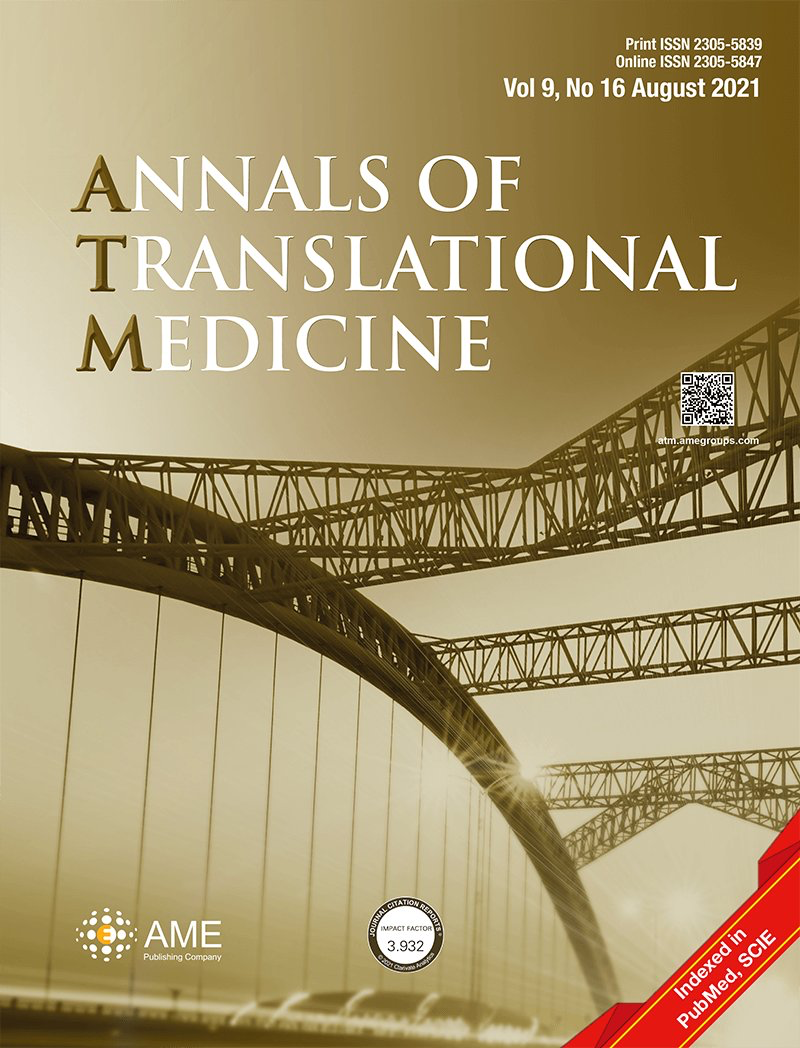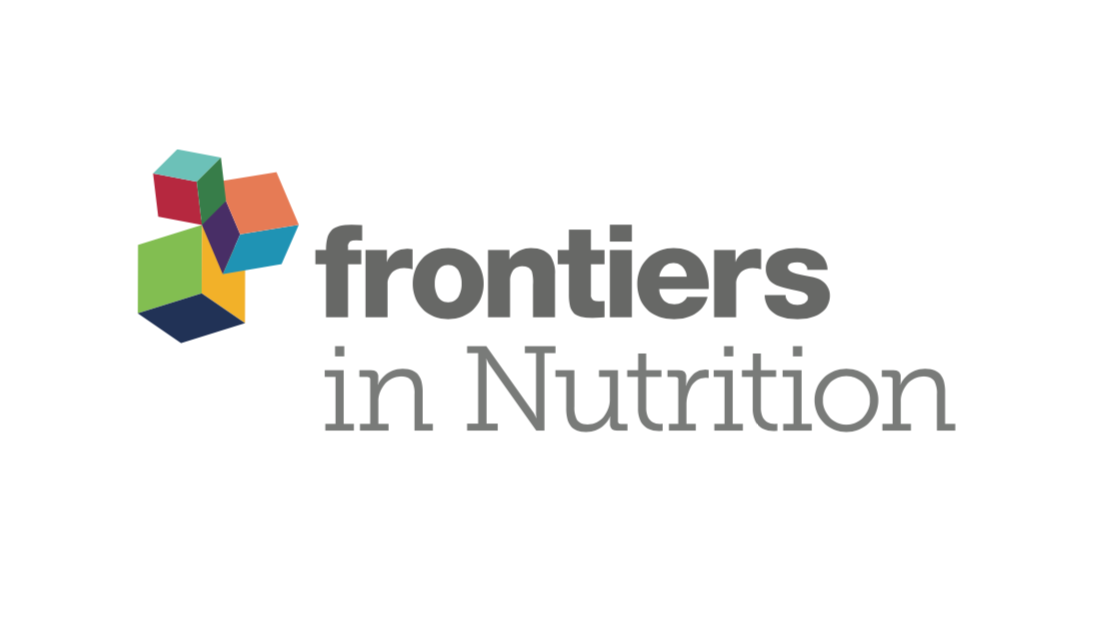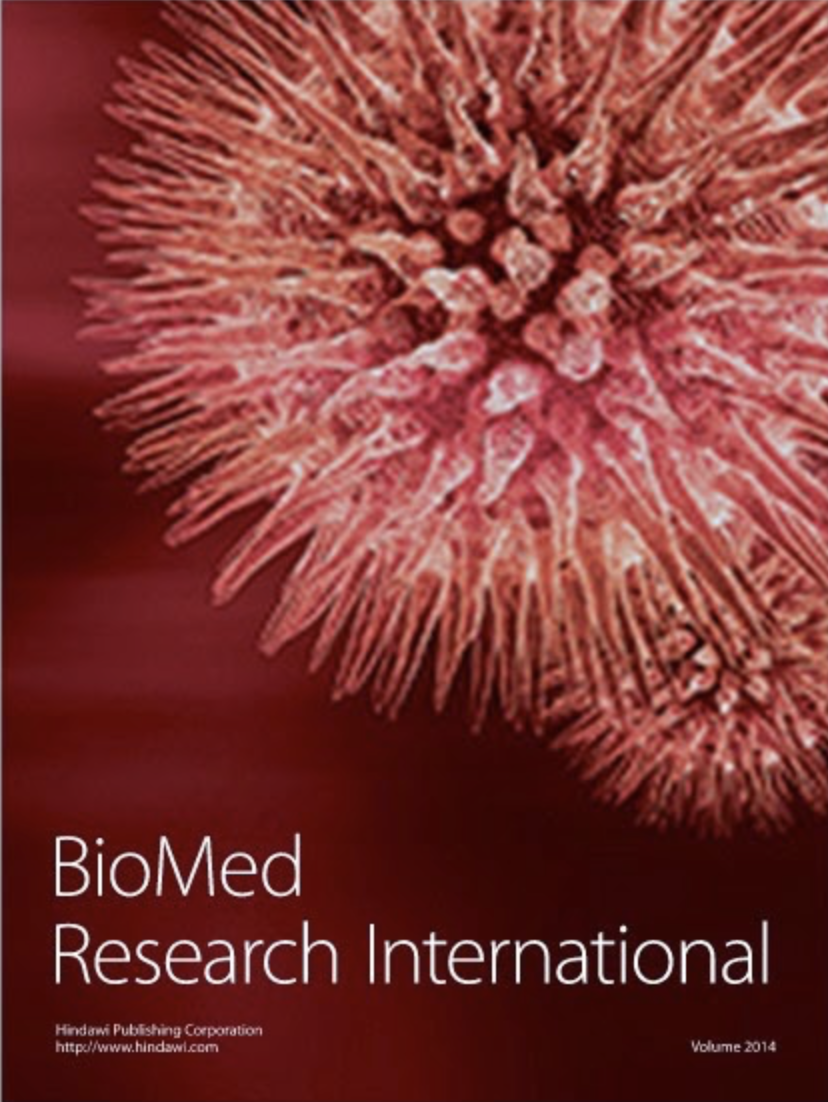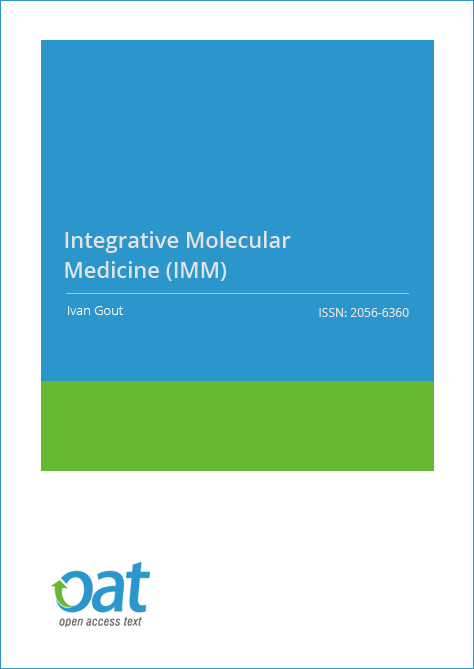Luteolin
How to submit an article:
- Registered users can submit any published journal article that has a unique DOI (Digital Object Identifier) name or link to Research Hub.
- For example, you can paste the full DOI link:
https://doi.org/10.1109/5.771073or just the DOI name:10.1109/5.771073into the field above and click submit. - The person who is first to submit a valid article to Research Hub will forever be credited for it, and every article submission earns you +6 Research Points.
Related Topics
Published research studies are articles that present the findings of original research that has undergone a peer-review process and has been made publicly available in scholarly journals, books or other media.

Mechanism and ingredients prediction of Radix Salviae-Angelicae Sinensis Radix-Lycii Fructus-Rehmanniae Radix Praeparata-Ginkgo Folium for retinitis pigmentosa therapy using network pharmacology and molecular docking analysis
2023 Oct Annals of Translational Medicine Wu J, Sun Z, Zhang D, Liu H, Wu J, Zhang S
Network Pharmacology Ginkgo Folium Shu Di Huang Goji Berry Dang Gui Retinitis PigmentosaThe research unveils luteolin, quercetin, and kaempferol in RALRG as promising complementary components for RP treatment, with a key role in managing oxidative stress and PI3K/AKT signaling pathways.

The hypolipidemic mechanism of chrysanthemum flavonoids and its main components, luteolin and luteoloside, based on the gene expression profile
2022 Sep 06 Frontiers in Nutrition Sun J, Wang Z, Lin C, Xia H, Yang L, Wang S, et al.
Chrysanthemum flavonoids (CF) exhibited 41 differential genes, including Sqle, Gck, and Idi1, associated with cholesterol and fatty acid metabolism, and glycolysis; luteolin intervention primarily influenced the synthesis and transport of cholesterol with 68 differential genes, including Acsl3, Cyp7a1, and Lpin1; while luteoloside intervention showed 51 differential genes, including Acaca, Cyp7a1, and Lpin1, mainly associated with fatty acid metabolism. The study highlights the complexity of CF's mechanism in improving hyperlipidemia, suggesting distinct pathways compared to luteolin and luteoloside, necessitating further investigation into the roles of other components.
Experimental Study Chrysanthemum Luteolin
Potential Molecular Mechanisms of Ephedra Herb in the Treatment of Nephrotic Syndrome Based on Network Pharmacology and Molecular Docking
2022 Jul 05 BioMed Research International Yao T, Wang Q, Han S, Lu Y, Xu Y, Wang Y
The study identified 22 main active ingredients in EH, such as quercetin, kaempferol, luteolin, and naringenin, targeting 105 NS-related genes. The PPI network revealed 53 core targets, including AKT1, TNF, IL6, VEGFA, and IL1B, crucial in NS treatment. Enrichment analysis highlighted pathways like PI3K-Akt signaling, TNF signaling, and AGE-RAGE signaling. Molecular docking confirmed good binding between active ingredients (kaempferol, luteolin, quercetin, naringenin) and target proteins (AKT1, TNF), suggesting potential mechanisms for EH in NS treatment.
Network Pharmacology Ma Huang Nephrotic Syndrome
Study the Mechanism of Gualou Niubang Decoction in Treating Plasma Cell Mastitis Based on Network Pharmacology and Molecular Docking
2022 Jun 15 BioMed Research International Wu Z, Yang Q, Ma H
The study identified 164 ingredients and 58 intersection targets in GLNBD's treatment of PCM. Four key active compounds (quercetin, luteolin, fisetin, kaempferol) and four key proteins (ALB, EGFR, IL-6, VEGFA) were identified. Enrichment analysis revealed associations with negative regulation of apoptosis, response to hypoxia, positive regulation of transcription, and DNA-templated, with related pathways involving the pathway in cancer, phosphatidylinositol 3-kinase (PI3K) Akt signaling pathway, and AGE-RAGE signaling pathway in diabetic complications. Molecular docking validated stable binding activities between key target genes and essential active compounds, suggesting their potential role in modulating relevant pathways.
Network Pharmacology Gua Lou Niu Bang Decoction
Systematic Elaboration of the Pharmacological Targets and Potential Mechanisms of ZhiKe GanCao Decoction for Preventing and Delaying Intervertebral Disc Degeneration
2022 Apr 22 Evidence-Based Complementary and Alternative Medicine Sun W, Chen Y, Li M
The study identified 154 active ingredients and 133 common genes in the "Intersecting genes-active components" network, with ten key genes (AKT1, TNF, IL6, TP53, IL1B, JUN, CASP3, STAT3, MMP9, and MAPK3). Quercetin, luteolin, and kaempferol were highlighted as the most important core active ingredients. KEGG enrichment analysis revealed pathways related to inflammation, apoptosis, senescence, and autophagy, including the AGE-RAGE signaling pathway, TNF signaling pathway, IL-17 signaling pathway, cellular senescence, apoptosis, and PI3K-Akt signaling pathway.
Network Pharmacology Zhi Ke Gan Cao Decoction Intervertebral Disc DegenerationResearch insights are moderated by the Research Hub team and offer an at-a-glance overview of interesting research findings.

2023 Annals of Translational Medicine
The research unveils luteolin, quercetin, and kaempferol in RALRG as promising complementary components for RP treatment, with a key role in managing oxidative stress and PI3K/AKT signaling pathways.
Network Pharmacology Dang Gui Ginkgo Folium Goji Berry Retinitis Pigmentosa Shu Di Huang
Mechanism and ingredients prediction of Radix Salviae-Angelicae Sinensis Radix-Lycii Fructus-Rehmanniae Radix Praeparata-Ginkgo Folium for retinitis pigmentosa therapy using network pharmacology and molecular docking analysis
Wu J, Sun Z, Zhang D, Liu H, Wu J, Zhang S

2022 Functional Foods in Health and Disease
A daily dose of Chrysanthemum flower extract was found to significantly reduce serum uric acid levels, potentially improving hyperuricemia.
Randomised Controlled Trial
Effects of luteolin-rich chrysanthemum flower extract on purine base absorption and blood uric acid in Japanese subjects
Takara T, Yamamoto K, Suzuki N, Yamashita S, Iio S, Kakinuma T, et al.

2021 Frontiers in Pharmacology
Luteolin, a component of traditional Chinese medicine herb Zi Su Ye, has been found to alleviate kidney disease stage 3-5 by reducing renal tubular epithelial cell apoptosis.
Network Pharmacology Chronic Kidney Disease
Exploring the Critical Components and Therapeutic Mechanisms of Perilla frutescens L. in the Treatment of Chronic Kidney Disease via Network Pharmacology
Yong C, Zhang Z, Huang G, Yang Y, Zhu Y, Qian L, et al.

2019 Applied Ecology and Environmental Research
Chrysanthemum, a plant primarily grown in China and Japan, offers significant health benefits including stress reduction, cardiovascular improvement, and lowering osteoporosis risk.
Theoretical Article Chrysanthemum Osteoporosis Stress
A REVIEW OF CHRYSANTHEMUM, THE EASTERN QUEEN IN TRADITIONAL CHINESE MEDICINE WITH HEALING POWER IN MODERN PHARMACEUTICAL SCIENCES
SHAHRAJABIAN MH

2017 Integrative Molecular Medicine
Luteolin, found in chrysanthemum flower extract, can potentially reduce serum uric acid levels, suggesting it may help prevent gout.
Randomised Controlled Trial Gout Uric Acid
Luteolin-rich chrysanthemum flower extract suppresses baseline serum uric acid in Japanese subjects with mild hyperuricemia
Hirano M, Takeda S, Hitoe S, Shimoda H
Review Articles
Review articles summarise and critically evaluate the current state of research on a specific topic or field by synthesising multiple primary research studies.
Clinical Trials
Clinical trials are research studies that involve people and are conducted to evaluate the safety and efficacy of new treatments or interventions, such as drugs, medical devices, or behavioural therapies.

Effects of luteolin-rich chrysanthemum flower extract on purine base absorption and blood uric acid in Japanese subjects
2022 Jan 10 Functional Foods in Health and Disease Takara T, Yamamoto K, Suzuki N, Yamashita S, Iio S, Kakinuma T, et al.
Randomised Controlled Trial LuteolinA daily dose of Chrysanthemum flower extract was found to significantly reduce serum uric acid levels, potentially improving hyperuricemia.

Luteolin-rich chrysanthemum flower extract suppresses baseline serum uric acid in Japanese subjects with mild hyperuricemia
2017 Jan Integrative Molecular Medicine Hirano M, Takeda S, Hitoe S, Shimoda H
Randomised Controlled Trial Luteolin Gout Uric AcidLuteolin, found in chrysanthemum flower extract, can potentially reduce serum uric acid levels, suggesting it may help prevent gout.
Study Protocols
Published study protocols are detailed plans that outline the objectives, methodology, statistical analyses, and organisation of a research study that have been made publicly available for others to review and use as a reference.
Presentation Slides

Network Pharmacology
The research unveils luteolin, quercetin, and kaempferol in RALRG as promising complementary components for RP treatment, with a key role in managing oxidative stress and PI3K/AKT signaling pathways.
Wu J, Sun Z, Zhang D, Liu H, Wu J, Zhang S

Randomised Controlled Trial
A daily dose of Chrysanthemum flower extract was found to significantly reduce serum uric acid levels, potentially improving hyperuricemia.
Takara T, Yamamoto K, Suzuki N, Yamashita S, Iio S, Kakinuma T, Baba A, Takeda S, Yamada W, Nagata M, Shimoda H

Network Pharmacology
Luteolin, a component of traditional Chinese medicine herb Zi Su Ye, has been found to alleviate kidney disease stage 3-5 by reducing renal tubular epithelial cell apoptosis.
Yong C, Zhang Z, Huang G, Yang Y, Zhu Y, Qian L, Tian F, Liu L, Wu Q, Xu Z, Chen C, Zhao J, Gao K, Zhou E

Theoretical Article
Chrysanthemum, a plant primarily grown in China and Japan, offers significant health benefits including stress reduction, cardiovascular improvement, and lowering osteoporosis risk.
SHAHRAJABIAN MH

Randomised Controlled Trial
Luteolin, found in chrysanthemum flower extract, can potentially reduce serum uric acid levels, suggesting it may help prevent gout.
Hirano M, Takeda S, Hitoe S, Shimoda H

Experimental Study
The ethanol extract of FCI potentially counters bone loss in mice by enhancing osteoblast proliferation and differentiation, facilitated by multiple bioactive compounds.
Li J, Lin X, Zhang Y, Liu W, Mi X, Zhang J, Su J
Executive Summary
Write an executive summary in the form of a blog article on the topic of "Research into Chinese medicine treatment for Luteolin" summarising the research below and using language that can be easily understood by patients and avoiding medical jargon using a professional and caring tone of voice.
Write an executive summary in the form of a blog article on the topic of "Researched Chinese medicine treatments for Luteolin" summarising the research below in an objective and easy to understand way, and using language that can be easily understood by patients. Group the article into Chinese medicine treatments first, followed by nutrition and other treatments. Avoid using medical jargon and use a professional and caring tone of voice.
Write me a concise but easy to understand executive summary on the topic of "Chinese medicine treatments for Luteolin" based on the following research that I will give you. Your summary should be 2 paragraphs long in Australian English spelling and include references to the studies.
A Network Pharmacology published in 2023 in the journal Annals of Translational Medicine found that The research unveils luteolin, quercetin, and kaempferol in RALRG as promising complementary components for RP treatment, with a key role in managing oxidative stress and PI3K/AKT signaling pathways. The research used various databases such as Traditional Chinese Medicine Systems Pharmacology Database and Analysis Platform, GeneCards, and the Online Mendelian Inheritance in Man database to gather the ingredients of RALRG and potential targets of RP and RALRG. A protein-protein interaction network was constructed to visualize these interactions. The R program was utilized to perform functional enrichment. The researchers constructed a visual RALRG-RP-pathway pharmacology network using Cytoscape 3.9.1 and applied molecular docking to compute binding affinity. The research revealed a total of 132 effective active elements in RALRG correlating to 248 target genes. Ninety-two intersection target genes were discovered from the overlap of RP- and RALRG-related genes. These intersection targets were discovered to be primarily involved in oxidative stress, responding to metal ions, and handling chemical stress. Several molecular pathways such as PI3K-AKT and MAPK were identified as closely connected to RP therapy. A potential pharmacology network was designed for the RALRG-RP-pathway with AKT1 and JUN being considered the main targets. The active ingredients luteolin, quercetin, and kaempferol were highlighted as crucial for this mechanism. RALRG overall was established as a main regulator for oxidative stress and PI3K/AKT signaling pathways in the treatment of RP.
A Randomised Controlled Trial published in 2022 in the journal Functional Foods in Health and Disease found that A daily dose of Chrysanthemum flower extract was found to significantly reduce serum uric acid levels, potentially improving hyperuricemia. In the methodology, two studies were conducted where 44 healthy Japanese men and women with slightly elevated serum uric acid levels were split into two groups, active and placebo, using a randomized computerized system. The active group received 100mg of Chrysanthemum flower extract containing 1mg of luteolin. In the first study, purine naturally found in food was ingested alongside the flower extract, and the participants' serum uric acid levels were measured over time. In the second study, the extract or a placebo was taken daily over 12 weeks. Changes in uric acid levels were the primary outcome, and blood, urine, and body parameters were checked to confirm the safety of the extract. For the results, in the first study, there were no significant differences found in serum uric acid levels between the group that consumed the extract and the placebo group following a purine-rich meal. However, in the second study spanning 12 weeks, the group that took the Chrysanthemum flower extract had significantly lower uric acid levels than the placebo group. Safety tests showed no adverse effects from taking the extract.
A Network Pharmacology published in 2021 in the journal Frontiers in Pharmacology found that Luteolin, a component of traditional Chinese medicine herb Zi Su Ye, has been found to alleviate kidney disease stage 3-5 by reducing renal tubular epithelial cell apoptosis. By using network pharmacology, the research identified the active components of a traditional Chinese medicine herb used for treating chronic kidney disease stages 3-5. Active components were analyzed using high performance liquid chromatography and enriched for substantial analysis. Thereafter, critical components were verified using molecular docking and experimentations. The key therapeutic targets were observed from a constructed PPI network, and further focused on five core nodes: AKT1, TP53, IL6, TNF, and MAPK1. In discussing the results, it was revealed that 19 active components were recognized, interlinking with 108 targets of chronic kidney disease stages 3-5. The potential regulation of various biological functions by these targets was suggested. Specifically, apoptosis, T cell receptor, and PI3K-AKT signaling pathways would be modulated. Molecular docking supported the premise that active components dock successfully with corresponding targets. Luteolin emerged as the most effective component in managing adriamycin-induced renal tubular apoptosis by affecting oxidative stress and downgrading the MAPK and p53 pathways.
A Theoretical Article published in 2019 in the journal Applied Ecology and Environmental Research found that Chrysanthemum, a plant primarily grown in China and Japan, offers significant health benefits including stress reduction, cardiovascular improvement, and lowering osteoporosis risk. The study focused on Chrysanthemum, a notable plant in the ornamental industry and traditional Chinese medicine, mainly grown in China and Japan. The researchers identified its crucial chemical extracts such as flavonoids, betaine, choline, and vitamin B1. They additionally pinpointed thirteen significant compounds of chrysanthemum flowers, including acacetin-7-0-beta- D-glucopyranoside, luteolin, acaciin, and boscialin, among others. The findings revealed that chrysanthemum tea exhibits considerable health advantages. It eases stress and anxiety, enhances cardiovascular health, protects against oxidative damage, inhibits inflammation, supports healthy immune function, ameliorates eye health, and decreases the risk for osteoporosis. In traditional Chinese medicine, chrysanthemum is considered a cold herb that dispels pathogenic heat, aids the liver, improves eyesight, and promotes detoxification. The study, therefore, endorsed the treatment with natural Chinese herbal medicine, especially chrysanthemum, over synthetic drugs for a more organic life.
A Randomised Controlled Trial published in 2017 in the journal Integrative Molecular Medicine found that Luteolin, found in chrysanthemum flower extract, can potentially reduce serum uric acid levels, suggesting it may help prevent gout. The research involved two double-blind placebo-controlled studies examining the impacts of chrysanthemum flower extract enriched with luteolin on serum uric acid levels. In a single-dose study, fasting participants consumed a capsule loaded with the luteolin-rich extract before partaking in a high purine meal, with uric acid levels evaluated over time. The second study involved repeated consumption of the capsule over a 4-week period, with fasting serum uric acid measured before and after consumption. The research found that although luteolin did not significantly affect uric acid levels immediately after consumption, there was an observed decrease in these levels following four weeks of continued ingestion. Most notably, subjects with a baseline uric acid level between 5.5 to 7.0 mg/dL saw a significant reduction after they consumed chrysanthemum flower extract. The trial also established that no adverse effects resulted from the ingestion of the extract.
A Experimental Study published in 2016 in the journal Evidence-Based Complementary and Alternative Medicine found that The ethanol extract of FCI potentially counters bone loss in mice by enhancing osteoblast proliferation and differentiation, facilitated by multiple bioactive compounds. In this study, the researchers scrutinized the antiosteoporosis potential of the ethanol extract of FCI in mice experiencing bone loss due to ovariectomy, a process likened to human menopause. In the process, the antiosteoporosis fraction derived from FCI was isolated and cleansed using a technique known as high-speed countercurrent chromatography, which resulted in the successful isolation of the principle bioactive compounds. The researchers found that, among the separations, the ethyl acetate fraction exhibited remarkable antiosteoporosis activity. Upon further analysis, the foremost compounds were identified as acacetin, apigenin, luteolin, and linarin. Furthermore, these compounds were found to stimulate the proliferation and differentiation of osteoblasts - the cells responsible for bone formation. The process was potentially mediated by the activation of the AKT signaling pathway and the upregulation of certain genes such as Runx2, OCN, OPN, and COL I. The collective efforts of these bioactive compounds played a crucial role in the observed antiosteoporosis effects, suggesting that the effectiveness of FCI is not reliant on a single component, but an ensemble of elements working in tandem.
Moderation Tools
Topic
Sign In
Users not signed in are limited to viewing the 5 most recent items of content.